


Maximizing Comfort In Minimal Space
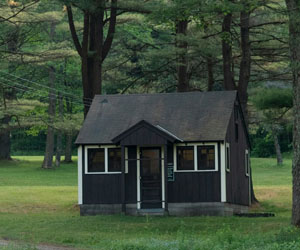
In today's world, many people are drawn to the concept of tiny living. The appeal lies in simplifying one's life, reducing environmental impact, and embracing a minimalist lifestyle. While tiny homes may have limited square footage, the key to making them work lies in the art of organized living. Organized tiny living isn't just about surviving in small spaces; it's about thriving and maximizing comfort, convenience, and functionality.
1. Purge And Prioritize
The first step in organized tiny living is decluttering and prioritizing your belongings. Pare down your possessions to the essentials and items that bring you joy. This process not only reduces the physical clutter in your tiny home but also clears mental clutter, creating a sense of calm and space.
2. Multifunctional Furniture
Tiny living demands furniture that pulls double duty. Invest in pieces that serve multiple functions, such as a sofa that can convert into a bed, a coffee table with storage, or a dining table that can fold away when not in use. These furniture items are crucial for maximizing space and utility.
3. Vertical Storage
Utilizing vertical space is key to organized tiny living. Install wall-mounted shelves, hooks, and pegs to keep items off the floor and create a sense of height. Vertical storage helps you keep your tiny home clutter-free while adding a touch of design flair.
4. Custom Storage Solutions
Tiny homes often require custom storage solutions. Consider hiring a professional or using DIY skills to create storage systems that fit your unique space. Custom cabinets, built-in shelving, and under-stair storage can make the most of every nook and cranny.
5. Clear Containers And Labels
Clear storage containers are your best friends in a tiny home. They allow you to see what's inside without having to open each container, making it easy to find what you need. Use labels to further organize your belongings, making your tiny space efficient and user-friendly.
6. Downsizing Your Wardrobe
In a tiny home, you'll need to downsize your wardrobe. Consider a capsule wardrobe with versatile, mix-and-match pieces. Rotate your clothing with the seasons to save space and keep your closet uncluttered.
7. Kitchen Efficiency
Tiny home kitchens require special attention. Invest in compact appliances, use wall-mounted storage for pots and pans, and opt for space-saving utensils and cookware. Staying organized in the kitchen is essential for making the most of your limited space.
8. Maximizing Natural Light
Natural light can make a tiny home feel more open and airy. Use light-filtering window treatments, strategically place mirrors to reflect light, and keep windows unobstructed to maximize the benefits of natural illumination.
9. Regular Maintenance
Tiny living doesn't mean ignoring maintenance. Regularly clean and declutter your space to maintain its organization. A little effort on a consistent basis goes a long way in keeping your tiny home comfortable and orderly.
Organized tiny living is all about making the most of a minimalist lifestyle in a compact space. By decluttering, investing in multifunctional furniture, using vertical storage, and customizing your storage solutions, you can create a comfortable and organized tiny home. The key is to prioritize and organize what truly matters to you, making your tiny space a reflection of your values and a place where you can live comfortably and contentedly.
 Growing your own food is not just a trend; it's a way of life that offers a plethora of benefits for individuals, communities, and the planet.
Growing your own food is not just a trend; it's a way of life that offers a plethora of benefits for individuals, communities, and the planet.
The Resurgence Of Home Gardening
In recent years, there has been a significant resurgence in home gardening. People from all walks of life are rediscovering the joy and satisfaction that comes with nurturing a garden and producing their food. Whether you have a sprawling backyard or just a tiny balcony, there's a way to grow something that will grace your table with fresh, homegrown flavors.
The Joys Of Growing Your Own Food
One of the most immediate and rewarding aspects of growing your own food is the connection you establish with the earth. As you till the soil, plant seeds, and watch your crops grow, you become part of the natural world's cycles. The joy of seeing a tiny seed sprout into a thriving plant and, eventually, bearing fruits or vegetables is a deeply gratifying experience. It's a tangible connection to the earth's rhythms.
Nutrition And Health Benefits
Homegrown produce is not only delicious but also healthier. You have control over what goes into your garden, which means you can choose to grow organic, pesticide-free food. This translates into fresh, nutrient-rich produce that you can pick at the peak of ripeness, ensuring the highest levels of vitamins and minerals. Additionally, the physical activity and fresh air involved in gardening contribute to a healthier lifestyle.

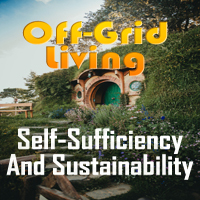
The Advantages Of Raised Beds
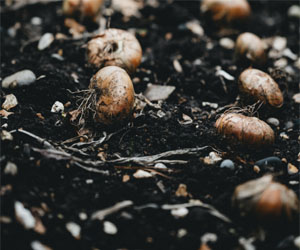 One of the primary benefits of raised beds is their superior drainage and soil aeration. Because the soil is elevated, excess water drains more efficiently, preventing waterlogged soil and root rot. This feature is especially valuable in regions with heavy rainfall or poor soil drainage. Additionally, the loose soil in raised beds allows for better aeration, promoting healthy root development.
One of the primary benefits of raised beds is their superior drainage and soil aeration. Because the soil is elevated, excess water drains more efficiently, preventing waterlogged soil and root rot. This feature is especially valuable in regions with heavy rainfall or poor soil drainage. Additionally, the loose soil in raised beds allows for better aeration, promoting healthy root development.
Improved Soil Quality
Gardeners have control over the composition of the soil in raised beds. You can customize the soil mix to meet the specific needs of your plants. This flexibility is especially advantageous if your natural soil is of poor quality. Gardeners often use a blend of topsoil, compost, and organic matter to create a rich, fertile growing medium in their raised beds.
Warmer Soil And Extended Growing Season
Raised beds are known for their ability to warm up earlier in the spring and stay warmer in the fall, effectively extending the growing season. The elevated structure allows the soil to absorb and retain heat more efficiently. This feature enables gardeners to start planting earlier and continue harvesting crops later into the year.
Ease Of Maintenance
Working in raised beds is generally more comfortable due to the raised height, which reduces the need for bending and kneeling. This is particularly beneficial for individuals with mobility issues or back problems. Additionally, the defined and structured layout of raised beds makes it easier to manage and maintain your garden.
 Energy Efficiency: Sustainable cleaning practices also involve energy-efficient cleaning appliances. This means reduced energy consumption, which is not only cost-effective but also better for the planet.
Energy Efficiency: Sustainable cleaning practices also involve energy-efficient cleaning appliances. This means reduced energy consumption, which is not only cost-effective but also better for the planet.
Effective Sustainable Cleaning Solutions
Eco-Friendly Cleaning Products: Look for cleaning products with eco-friendly certifications such as the "EcoLogo" or "Green Seal." These products are verified to meet environmental and health standards.
Homemade Cleaning Solutions: You can make your own sustainable cleaning solutions using readily available ingredients like vinegar, baking soda, lemon juice, and essential oils. These natural ingredients are effective for various cleaning tasks and are safe for your family and the environment.
Refillable Containers: Opt for cleaning products that come in refillable containers, reducing the need for single-use plastic bottles that contribute to environmental pollution.
Reusable Cleaning Tools: Invest in reusable cleaning tools such as microfiber cloths and mop heads. These tools effectively capture dirt and dust, reducing the need for disposable cleaning supplies.
Water Conservation: Sustainable cleaning also involves water conservation. Be mindful of the amount of water you use during cleaning, and consider water-saving practices like using a bucket for mopping instead of running water.
The Benefits Of Sustainable Cleaning Solutions
Healthier Indoor Air Quality: Sustainable cleaning solutions do not release harmful volatile organic compounds (VOCs) into the air, leading to cleaner and healthier indoor air. This is particularly important for individuals with respiratory issues or allergies.



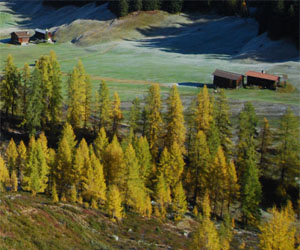
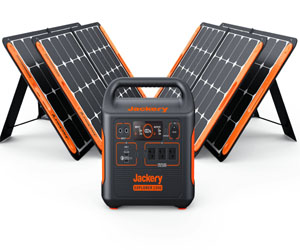

The Art Of Seasonal Planting
 The Importance Of Seasonal Planting
The Importance Of Seasonal Planting
Seasonal planting is more than just a tradition; it is a science and an art that has been practiced for generations. It recognizes the fact that different plants thrive in different seasons due to variations in temperature, daylight, and weather conditions. By aligning your garden with these natural rhythms, you can optimize plant growth, health, and yield.
Key Benefits Of Seasonal Planting
Optimal Growth Conditions: Seasonal planting ensures that your crops receive the right balance of sunlight, temperature, and moisture at each stage of their growth. This leads to healthier and more productive plants.
Crop Diversity: Planting seasonally allows you to diversify your garden throughout the year. Different seasons support various plant families, from cool-season greens in spring to warm-season fruits in summer.
Pest And Disease Management: Seasonal changes can disrupt the life cycles of garden pests and pathogens. By rotating your crops seasonally, you reduce the risk of infestations.
Soil Health: Seasonal planting helps maintain soil fertility by preventing the depletion of specific nutrients. Different plants have varying nutrient needs, and rotating them can help your soil recover.
A Cleaner Home And Healthier Planet
 1. Switch To Eco-Friendly Cleaning Products
1. Switch To Eco-Friendly Cleaning Products
One of the simplest and most effective ways to embrace green cleaning is to replace traditional cleaning products with eco-friendly alternatives. Look for cleaning products that have been certified as environmentally safe, such as those bearing the "EcoLogo" or "Green Seal" labels. These certifications ensure that the products meet stringent environmental and health standards.
2. Create Your Homemade Cleaning Solutions
Another excellent recommendation is to make your own green cleaning solutions using readily available household ingredients. Common items like white vinegar, baking soda, lemon juice, and essential oils can effectively clean a wide range of surfaces and provide a fresh, natural scent. You can mix these ingredients to create all-purpose cleaners, window cleaners, and even disinfectants.
3. Prioritize Reusable Cleaning Tools
Invest in high-quality, reusable cleaning tools such as microfiber cloths, mop heads, scrub brushes, and dusters. These tools are not only efficient at capturing dirt and dust, but they also eliminate the need for disposable cleaning supplies. By opting for reusable tools, you can significantly reduce waste and contribute to a cleaner planet.
4. Embrace Energy-Efficient Cleaning Appliances
When it's time to replace your cleaning appliances, consider investing in energy-efficient models. Energy-efficient vacuum cleaners, steam cleaners, and other cleaning appliances not only save you money on energy bills but also reduce your overall energy consumption, which is better for the environment.
5. Practice Water Conservation
Water is a precious resource, and green cleaning recommendations also include water conservation. When cleaning, be mindful of the amount of water you use. Opt for water-saving practices such as using a bucket for mopping rather than letting the water run continuously. Waterless cleaning technologies, like dry steam cleaning, are also excellent options that minimize water usage.